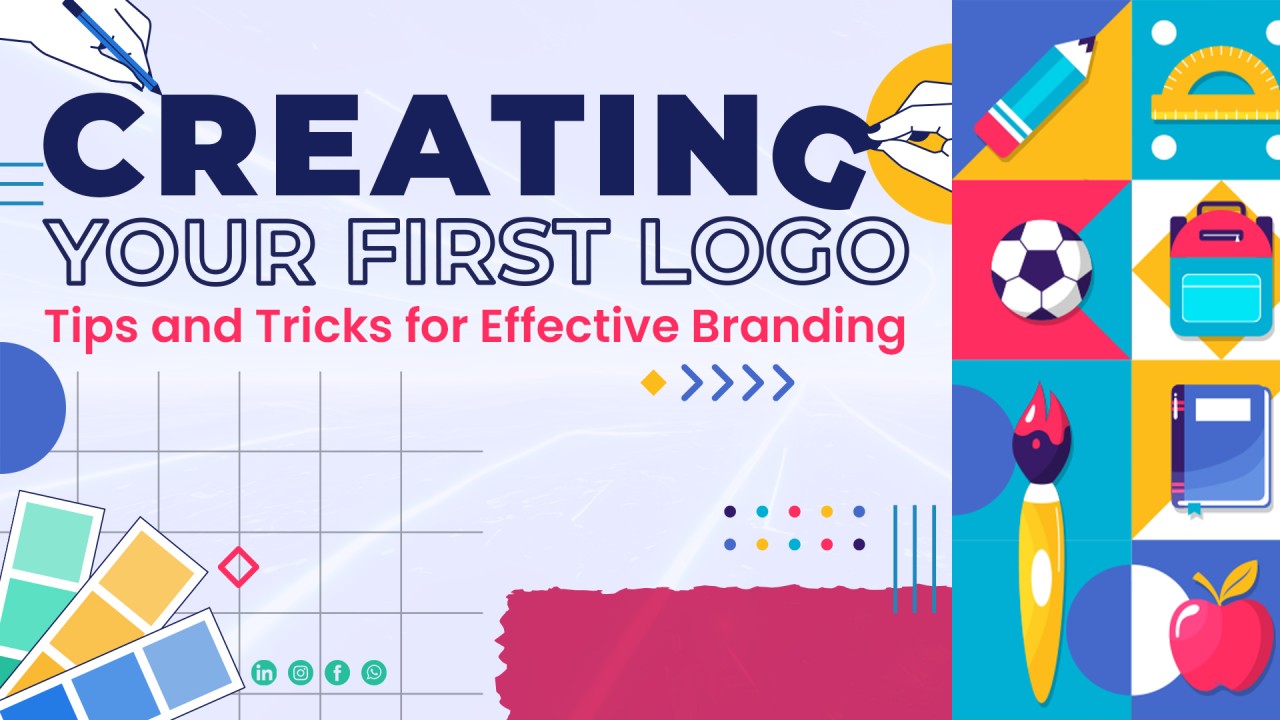How to Create a Brand Logo that Stands the Test of Time
Designing a timeless brand logo isn’t about following the latest design trend. It’s about creating a symbol that will represent your business for decades. The Mercedes-Benz star and Shell’s iconic yellow shell are wonderful examples of logos that have remained relevant with strategic updates.
These logos never chased trends but have shown the core values and vision of the brands since day one. The key behind successful logos that remain consistent is simplicity, versatility, and meaning. For those looking to enhance their branding with complementary materials, StationeryXpress.com offers a variety of customizable options to keep your brand consistent across all platforms.
This blog post will examine how to create a logo that summarises your brand and remains consistent in ever-evolving markets.
Know Your Brand Identity
Before designing a logo, a deep understanding of your brand’s identity is really important. Your logo should communicate the main values, mission, and vision that your business represents.
A logo like the bitten apple by Apple is easily recognisable because it conveys, wordlessly, what the brand is all about. You can achieve this by following the strategies mentioned below:
- Know your audience: Knowing who your customers are, what they value, and how you want them to perceive your brand will definitely help. Logos that directly reflect audience perception tend to have a longer life.
- Highlight your USP: Every successful logo carries a message. Apple’s minimalist design speaks to innovation and simplicity, while Nike’s swoosh speaks about movement and speed.
Keep It Simple
However, simplicity is usually one of the most forgotten but important aspects of creating a timeless logo. A simplistic design is much easier to recognise and remember, and it’s adaptable to various mediums over time.
Think of some of these most enduring logos, like FedEx and Coca-Cola. These are neat, clean, uncluttered, and adaptable.
- Keep it simple. Avoid complicated elements and a variety of fonts. An overly informative logo will quickly look outdated.
- Opt for simplicity over literal representation: Your logo doesn’t have to spell out what your business does. It should invoke an emotion or an idea. FedEx’s logo uses an arrow discreetly, which indicates speed and precision.
Timeless Typography
Typography in logo design is often underestimated, yet it is very important in conveying the right message. Choose a font that reflects your brand tone, but keep trends in mind.
- Use timeless fonts: Helvetica, Futura, and classic serif fonts will never go out of style. They are simple, clean, and easily readable across various mediums.
- Avoid fashionable or trendy fonts. These may get your attention right now, but in a very brief time, they are out of style. Instead, choose classic, clean, and readable fonts that will stand the test of time.
- Creative use of typography: Consider what can be done creatively with typography to have a distinctive effect on your logo design, such as the FedEx hidden arrow or the clever spacing between letters in the Amazon logo.
Meaningful Color Choices
Colour psychology also plays a significant role in how your logo is perceived. The right colours can evoke emotions and represent your brand’s essence. However, colour choices should be timeless, not trendy.
- Stick to classic colour palettes: Colors like blue for trust, red for passion, and black for luxury are never out of date. For example, IBM’s blue logo conveys the assurance of trust and professionalism, looking timeless enough to last centuries.
- Limit colours: Most timeless logos use only two or three colours. This simplicity ensures that your logo will be easy to reproduce in full colour and grayscale across many different platforms.
Flexibility and Scalability
Your logo should work across a range of mediums and sizes, from the tiniest social media icons up to multisize billboard ads. One characteristic of a timeless logo is that it’s highly scalable without losing clarity or impact.
- Test your logo’s scalability: Sometimes, scaling your logo to really large formats and shrinking it to a small icon can impact how good the logo looks. You can test your logo by physically printing it on different materials and noticing how it looks in both large and small formats.
- Versatility counts: Ensure that your design looks as great in colour as it does in black and white. The Coca-Cola and Nike logos are instantly recognisable in full-colour format or as a simple black-and-white outline.
Meaningful Symbols and Shapes
Shape and symbolism are highly crucial when it comes to the longevity of a logo’s success. It is astounding how different shapes alone can create feelings and mean different things to consumers.
- Choose meaningful shapes: For example, circles are shapes representing unity and wholeness, while squares usually mean stability. Your selection of shape could subtly affect how people may think of your brand.
- Use meaningful symbols: Incorporating subtle symbolism into your design might make it more memorable to your audience. The FedEx arrow reinforces the company’s focus on speed and precision.
- Avoid generic signs: Generic signs like a globe or star might make your brand look like every other common brand out there. Think of something more creative that resonates with your brand identity.
Legal Protection and Consistency
When designing a logo, the legal protection of your logo is often overlooked. A logo is an intellectual property, and any asset of value should be protected.
Trademark your logo: Register your logo so that it is legally protected against any future disputes.
Consistency: The logo should be used consistently across all branding materials so that, over time, it will build recognition. This includes creating brand guidelines that explain how the logo should be used across various platforms.
Evolving While Staying Timeless
Even the most iconic logos have undergone changes, but these are very subtle and focused on keeping the design fresh without losing their core identity.
- Refresh, not redesign: If the logo starts to feel a little outdated, focus your attention on modernising small elements rather than a full redesign. This way, you can stay relevant but still maintain your brand recognition. For Example: Marriott changed its color scheme but kept the same style as its previous logo.
- Don’t follow every trend: Trends come and go, but a timeless logo is permanent. Also, every new design trend doesn’t need to be followed as long as the core of your brand remains consistent, you may always go for strategic updates that amplify the brand’s identity from time to time.
Conclusion
A classic brand logo is not an art but rather about how well you know your brand’s identity, the selection of timeless elements, fonts, colour combination, and scalability that gives it versatility. Actually, just paying simple attention to simplicity, clarity, and consistency will do enough to give you a memorable yet future-adaptable logo.
You can contact Toni Hukkanen to create a well-designed logo that will silently communicate your brand’s essence with one glance, ensuring that your brand remains recognisable and relevant for years to come.





